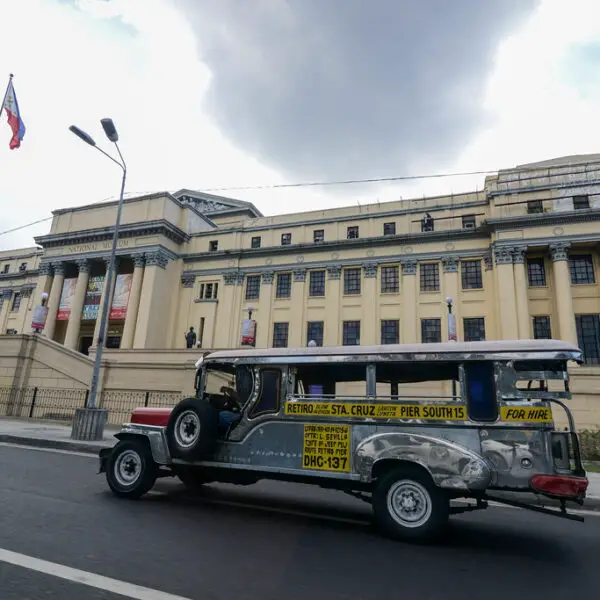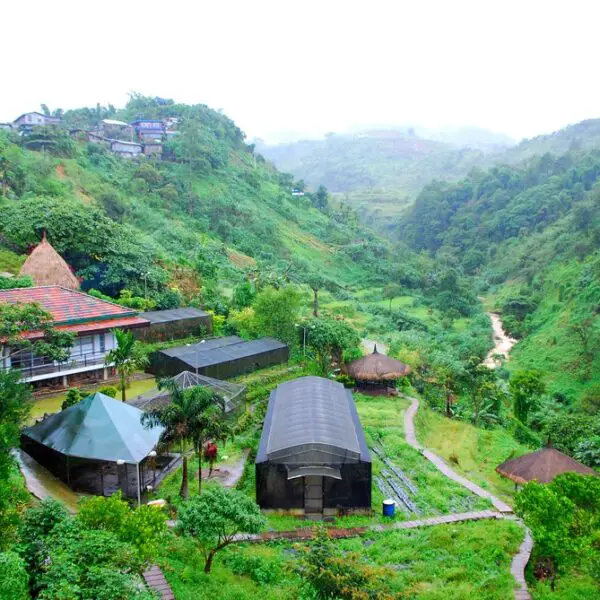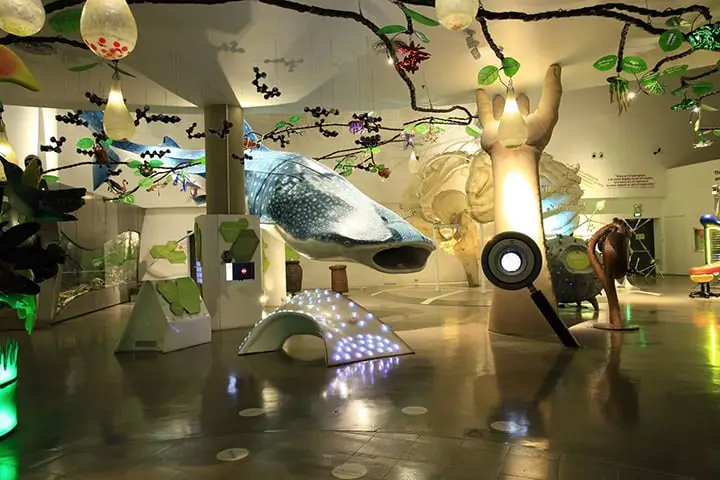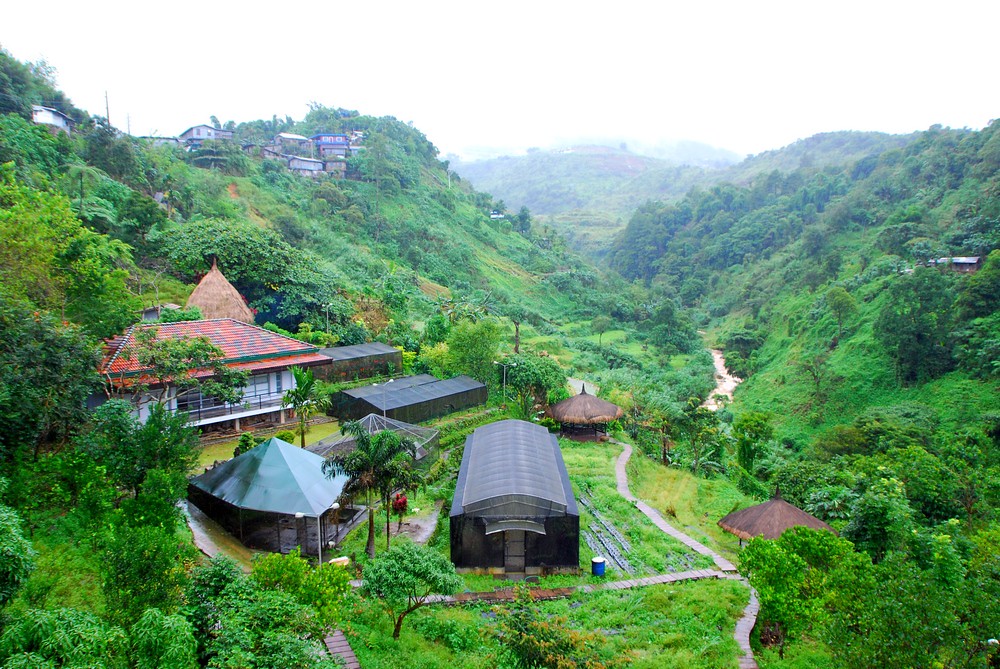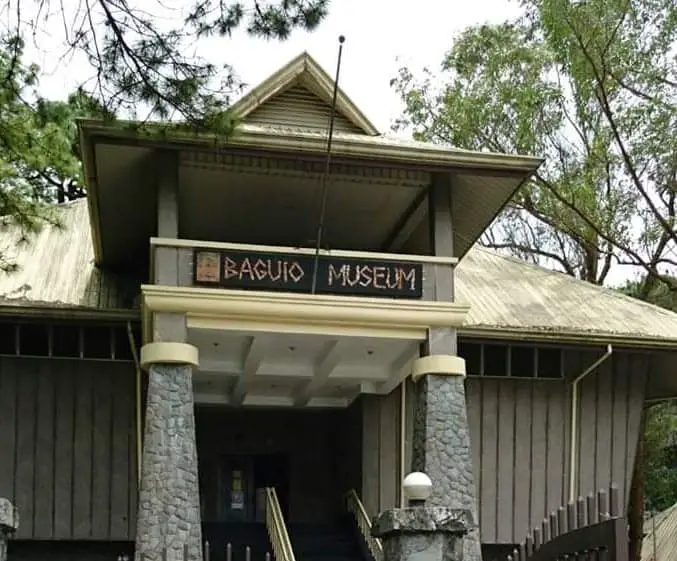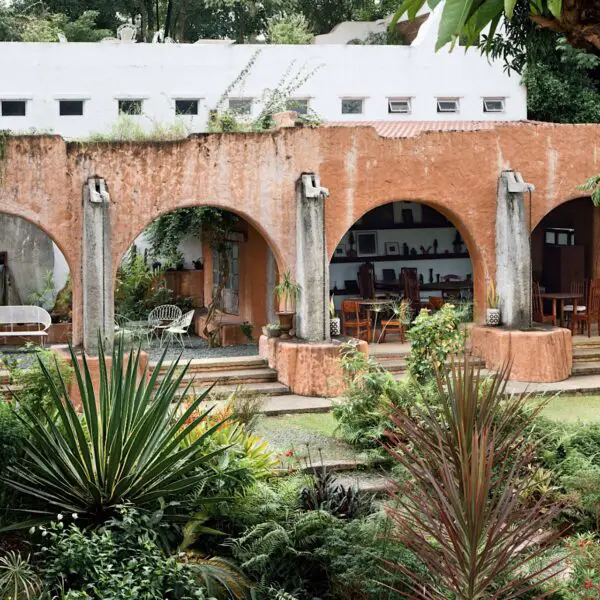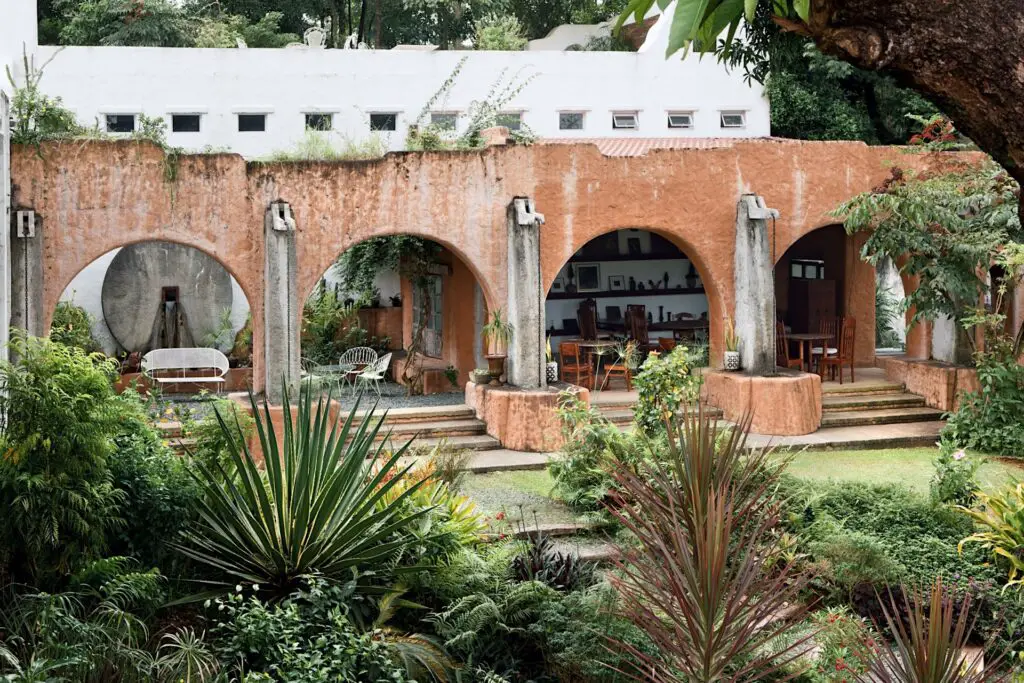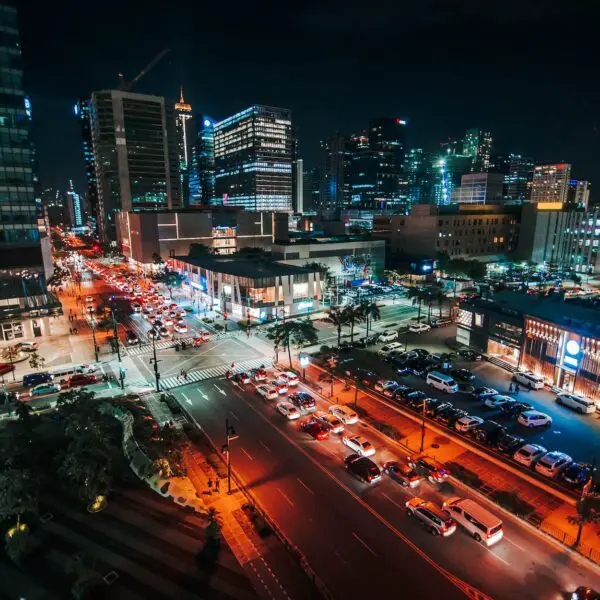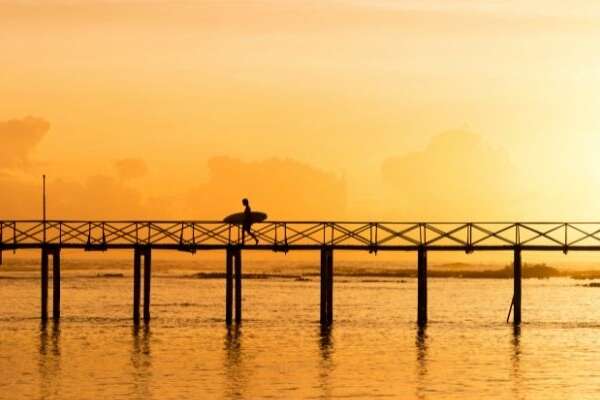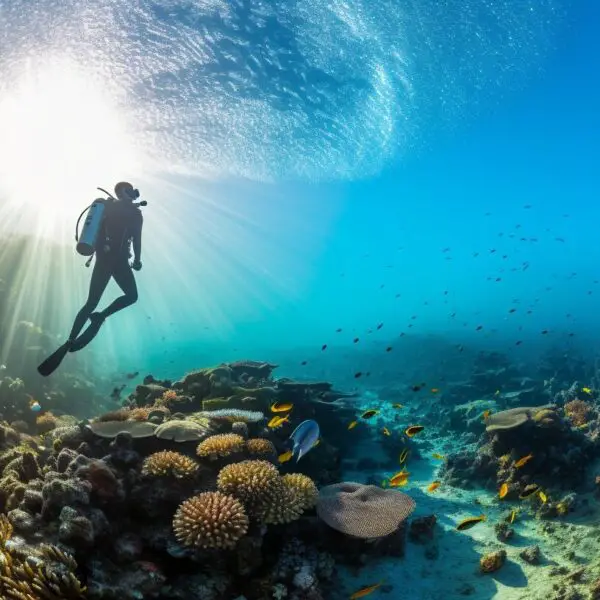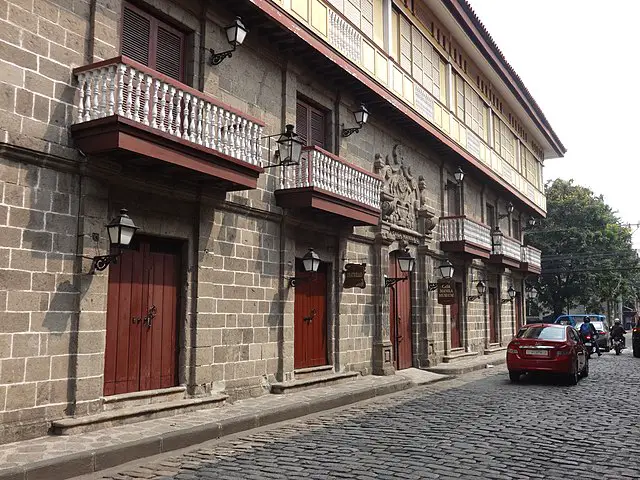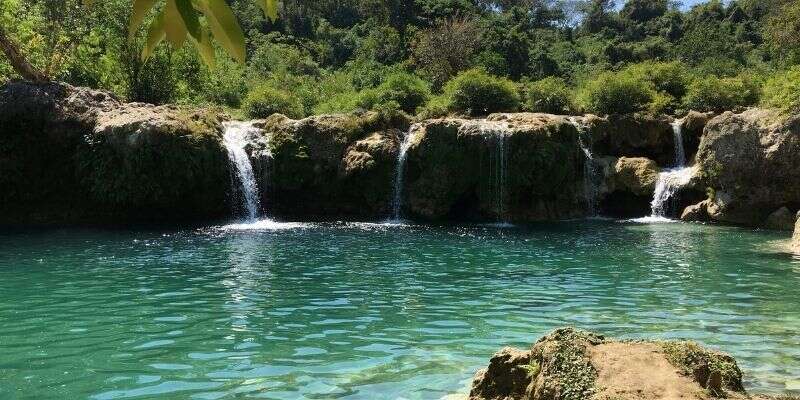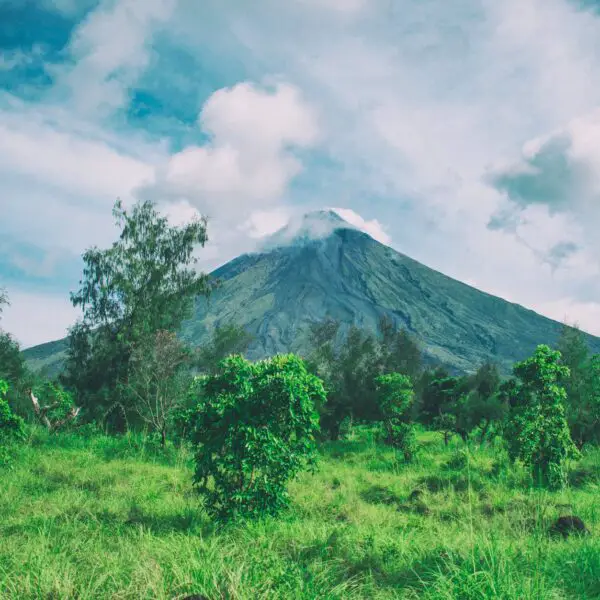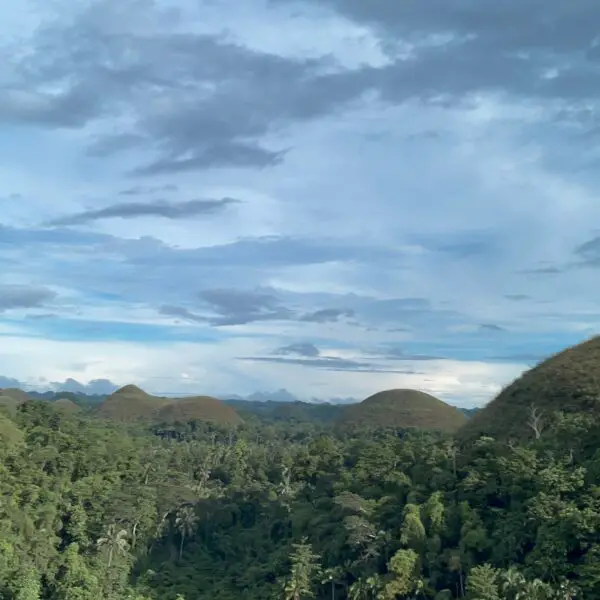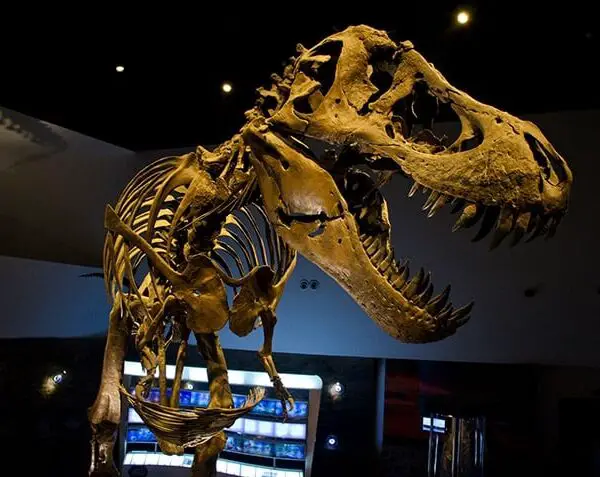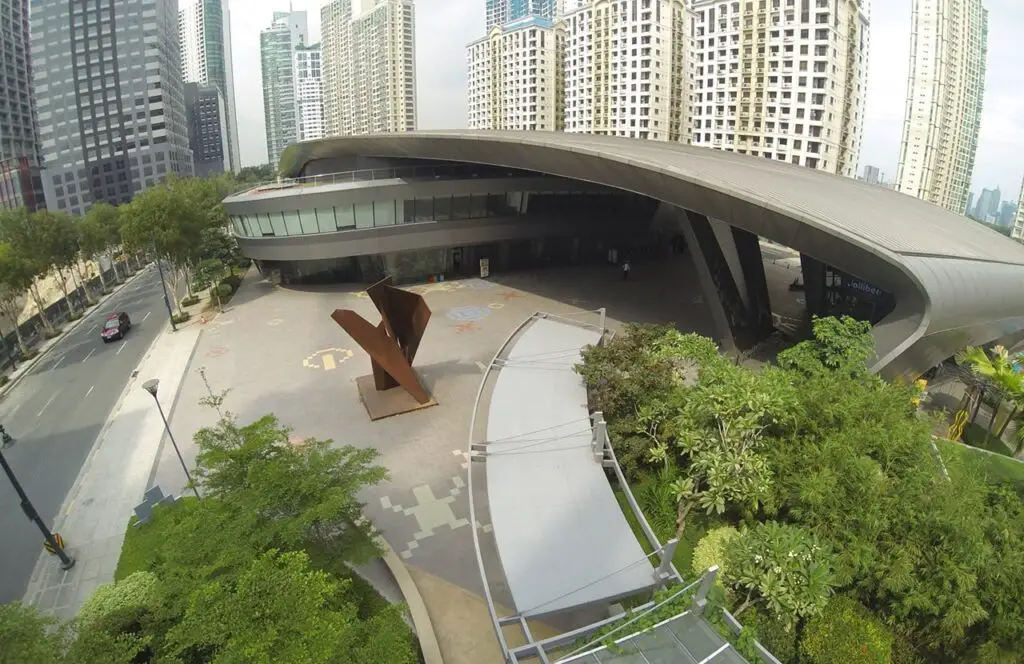Are you planning a trip to Manila and interested in exploring its rich cultural heritage? Look no further than the national museums in Manila. These prestigious institutions offer a fascinating glimpse into the country’s artistic and historical legacy, providing an immersive experience for visitors of all ages.
From the iconic masterpieces at the National Museum of Fine Arts to the diverse ethnographic collections at the National Museum of Anthropology, there is something for everyone to enjoy. And let’s not forget the National Museum of Natural History, which showcases the breathtaking biodiversity of the Philippines.
In this comprehensive guide, we will take you on a journey through Manila’s national museums, providing you with everything you need to know before your visit. From practical tips and guidelines to the must-see exhibits and galleries, this guide will help you make the most of your museum experience in the Philippine capital.
Key Takeaways:
- Explore the cultural and historical significance of the national museums in Manila.
- Discover iconic masterpieces and classical artwork at the National Museum of Fine Arts.
- Immerse yourself in the diverse ethnographic and archaeological exhibits at the National Museum of Anthropology.
- Unveil the secrets of Philippine biodiversity at the National Museum of Natural History.
- Get practical tips and guidelines for a smooth and enjoyable museum visit.
Introduction to Manila’s National Museums
Manila’s National Museums are a testament to the rich cultural heritage of the Philippines. These institutions play a vital role in preserving and showcasing the country’s artistic and historical legacy, providing a glimpse into its diverse and vibrant culture. With their extensive collections and educational programs, these museums serve as important cultural hubs, offering visitors a deeper understanding of the Philippines’ cultural identity.
From ancient artifacts to contemporary masterpieces, the museums in Manila offer a wide range of exhibitions and galleries that cater to art enthusiasts, history buffs, and curious travelers. Each museum holds its own unique treasures, contributing to the overall tapestry of Philippine culture.
To truly appreciate the cultural significance of the national museums in Manila, one must explore their fascinating collections and immerse themselves in the stories they tell. This guide will take you on a journey through the various national museums in Manila, providing insights into their highlights, historical backgrounds, and practical tips for your visit. Whether you’re a local seeking to reconnect with your cultural heritage or a visitor eager to discover the beauty of the Philippines, these museums offer an enriching and inspiring experience.
So, let’s step into the world of Manila’s National Museums and embark on an incredible journey through the art, history, and cultural treasures of the Philippines.
Exploring the National Museum of Fine Arts
The National Museum of Fine Arts is a testament to the rich cultural heritage of the Philippines. This premier institution in Manila is home to a remarkable collection of classical artwork, sculptures, and architectural marvels.
The Breathtaking Spoliarium by Juan Luna
One of the highlights of the National Museum of Fine Arts is the awe-inspiring painting, Spoliarium. Created by renowned Filipino artist Juan Luna, this masterpiece is a monumental depiction of suffering and tragedy. Its grandeur and emotional intensity make it a must-see for art enthusiasts and history buffs alike. The Spoliarium showcases both the technical brilliance and the deep social commentary that Luna was known for.
Classical Artwork and Sculptures
Beyond the Spoliarium, the National Museum of Fine Arts boasts a diverse collection of classical artwork and sculptures. Visitors can marvel at pieces from various periods, including works by renowned Filipino artists such as Felix Resurrección Hidalgo and Fernando Amorsolo. The museum’s galleries showcase the skill and creativity of these artists, offering a glimpse into the rich artistic traditions of the Philippines.
Architectural Significance of the Museum Building
Aside from its impressive art collection, the National Museum of Fine Arts is itself an architectural masterpiece. The building, formerly known as the Old Legislative Building, is a striking example of neoclassical architecture. Its grand facade, intricate details, and imposing presence make it a significant landmark in Manila.
The museum’s architecture reflects the historical and cultural significance of the institution, blending harmoniously with its surroundings. The building’s design and layout provide a fitting backdrop for the works of art it houses, enhancing the overall museum experience for visitors.
Whether you are an art enthusiast, a history lover, or simply looking to appreciate the beauty of classical artwork and museum architecture, a visit to the National Museum of Fine Arts is a must during your time in Manila.
Discovering the National Museum of Anthropology
In this section, readers will learn about the National Museum of Anthropology, which showcases the rich ethnographic and archaeological collections of the Philippines. This museum offers a glimpse into the country’s diverse cultural heritage and provides a deeper understanding of its indigenous peoples and their traditions.
The National Museum of Anthropology is dedicated to preserving and presenting the unique ethnographic and archaeological exhibits that represent the cultural richness of the Philippines. Visitors can explore a wide range of artifacts, artwork, and archaeological findings that shed light on the country’s indigenous communities and their way of life.
The exhibits at the National Museum of Anthropology offer valuable insights into the traditions, customs, and beliefs of various indigenous groups in the Philippines. From intricate textiles and traditional costumes to tribal instruments and jewelry, each artifact tells a story of cultural heritage and preservation.
The museum also houses a collection of archaeological exhibits, including ancient pottery, tools, and other artifacts that provide a glimpse into the prehistoric civilizations that once thrived in the Philippines. These archaeological finds help visitors understand the historical development of the country and its connections to neighboring regions.
With its extensive collection and informative displays, the National Museum of Anthropology offers visitors a unique opportunity to appreciate and celebrate the diverse cultural tapestry of the Philippines. Whether you’re interested in anthropology, archaeology, or simply want to learn more about the indigenous peoples of the country, this museum is a must-visit destination.
Plan your visit to the National Museum of Anthropology and immerse yourself in the rich tapestry of Philippine culture and history. Experience the beauty and significance of the country’s ethnographic and archaeological heritage, gaining a greater appreciation for the cultural diversity that defines the Philippines.
A Walk Through the National Museum of Natural History
Welcome to the National Museum of Natural History, a captivating destination for nature enthusiasts. This museum showcases the incredible biological and geological diversity of the Philippines. With twelve permanent galleries, visitors have the opportunity to explore and learn about the unique flora, fauna, and geological formations that make the Philippines a true gem of biodiversity.
One of the highlights of the National Museum of Natural History is its iconic “Tree of Life” structure. This awe-inspiring centerpiece symbolizes the interconnectedness of different ecosystems in the country. As you walk through the museum, you’ll experience the wonders of Philippine biodiversity firsthand.
Each gallery in the National Museum of Natural History presents a different facet of the country’s diverse natural heritage. From the rich marine ecosystems of the Philippine seas to the lush rainforests teeming with life, visitors will discover the beauty and fragility of these ecosystems and the importance of their preservation.
| Gallery | Highlights |
|---|---|
| Marine and Coastal Biodiversity |
|
| Terrestrial Biodiversity |
|
| Geological Treasures |
|
Whether you’re interested in marine life, terrestrial ecosystems, or the fascinating geological wonders of the Philippines, the National Museum of Natural History offers a comprehensive and educational experience for all visitors. Prepare to be amazed by the natural wonders that await you at this remarkable museum.
Navigating the National Museums: Practical Tips and Guidelines
When planning a visit to the national museums in Manila, it’s essential to be well-prepared to make the most of your experience. This section provides practical tips and guidelines to ensure a smooth and enjoyable visit.
Updated Visiting Hours and Admission Fees
Prior to your visit, it’s important to check the updated visiting hours of the national museums in Manila. Each museum may have different operating hours, so it’s essential to plan accordingly. Additionally, be aware of the admission fees for each museum, as they may vary depending on the type of visitor and any ongoing exhibitions.
Understanding the New Normal: Health and Safety Protocols
The national museums in Manila have implemented health and safety protocols to prioritize the well-being of visitors. It is important to familiarize yourself with these protocols before your visit. These may include mandatory temperature checks, wearing masks, practicing physical distancing, and using hand sanitizers provided within the museums.
To ensure a safe and comfortable visit, it is advisable to follow these protocols diligently and cooperate with museum staff. By doing so, you can enjoy the exhibits while also contributing to the overall well-being of fellow visitors.
Booking Procedures for Group Visits
If you plan to visit the national museums in Manila as a group, it is recommended to make advance reservations. This will ensure that the museums can accommodate your group properly and provide a more personalized experience. Contact the museums directly to inquire about their booking procedures and any special arrangements available for group visits.
By following these practical tips and guidelines, you can navigate the national museums in Manila with ease and maximize your museum experience. Remember to plan your visit in advance, adhere to health and safety protocols, and make necessary reservations for group visits. With proper preparation, you can delve into the rich cultural heritage of the Philippines and create lasting memories.
What to See at the National Museum of Fine Arts
This section highlights the highlights of the National Museum of Fine Arts and provides insights into the permanent exhibitions and galleries. Visitors will have the opportunity to witness notable artifacts that reside in the museum and learn about their historical significance and the stories behind them.
Permanent Exhibitions and Galleries
The National Museum of Fine Arts boasts a remarkable collection of permanent exhibitions and galleries that showcase the diverse artistic heritage of the Philippines. Each gallery offers a unique experience, allowing visitors to immerse themselves in different art movements, styles, and mediums.
Some notable permanent exhibitions and galleries include:
- The Old Senate Session Hall – this architectural gem displays the works of renowned Filipino artists such as Juan Luna, Félix Hidalgo, and Fernando Amorsolo.
- The Vargas Museum and Filipiniana Research Center – here, visitors can explore a wide range of Filipino art and cultural artifacts, including historical maps, photographs, and memorabilia.
- The Hall of Masters – housing masterpieces from various periods, this gallery celebrates the mastery and creativity of Filipino artists throughout history.
These permanent exhibitions and galleries offer a comprehensive view of the artistic heritage of the Philippines, providing a captivating experience for art enthusiasts and history lovers alike.
Notable Artifacts and Their Histories
Within the National Museum of Fine Arts, visitors can encounter notable artifacts that hold great historical and cultural significance. These artifacts tell compelling stories about the country’s past and the artistic prowess of Filipino artists.
One of the most iconic artifacts is the Spoliarium by Juan Luna. This magnificent painting depicts the aftermath of gladiator fights during Roman times and serves as a symbol of Filipino resilience and strength.
Other notable artifacts include Fernando Amorsolo’s vibrant landscape paintings, Félix Resurrección Hidalgo’s romantic masterpieces, and the intricate sculptures of Guillermo Tolentino.
Each artifact housed in the National Museum of Fine Arts holds a unique history and narrative, showcasing the artistic talent and cultural heritage of the Philippines.
| Artifact | Description | Artist |
|---|---|---|
| The Spoliarium | A monumental painting depicting the aftermath of gladiator fights during Roman times. | Juan Luna |
| Landscape Paintings | Vibrant and picturesque depictions of the Philippine countryside. | Fernando Amorsolo |
| Masterpieces | Imaginative and emotional artworks that celebrate the beauty of the Philippines. | Félix Resurrección Hidalgo |
| Sculptures | Exquisite and intricate sculptures showcasing Filipino artistry. | Guillermo Tolentino |
National Museum of Anthropology’s Highlights
In this section, readers will explore the highlights of the National Museum of Anthropology, delving into its ethnographic collections and archaeological artifacts. The museum offers a fascinating glimpse into the diverse cultural heritage of the Philippines, showcasing exhibits that provide valuable insights into the lives and traditions of different indigenous groups.
One of the standout features of the museum is its extensive collection of ethnographic artifacts. Visitors can admire intricately crafted textiles, traditional costumes, religious objects, and everyday items that offer a window into the past. These artifacts highlight the richness and complexity of Philippine culture and allow visitors to appreciate the cultural diversity of the country.
The museum also houses a significant collection of archaeological artifacts that shed light on the ancient history of the Philippines. From pottery and tools to pottery and jewelry, these artifacts provide valuable insights into the lifestyles and technologies of past civilizations. Visitors can witness the craftsmanship and ingenuity of the indigenous peoples who inhabited the region many centuries ago.
By exploring the National Museum of Anthropology, visitors can deepen their understanding of the cultural heritage of the Philippines and gain a greater appreciation for the rich tapestry of traditions and histories that shape the nation.
Unveiling the Secrets of Philippine Biodiversity at the Natural History Museum
The Natural History Museum is a treasure trove of knowledge that unveils the remarkable secrets of Philippine biodiversity. Through its dynamic exhibits on Philippine flora and fauna, visitors can embark on a journey of discovery, gaining a deeper appreciation for the country’s rich natural heritage.
Step into the museum and be captivated by the immersive displays that showcase the remarkable diversity of plant and animal life found in the Philippines. From lush rainforests teeming with vibrant blooms to the mysterious depths of the ocean teeming with fascinating marine species, the exhibits offer a captivating glimpse into the intricate web of life that exists within the archipelago.
Dynamic Exhibits on Philippine Flora and Fauna
The Natural History Museum’s exhibits on Philippine flora and fauna are carefully curated to provide a comprehensive overview of the country’s unique ecosystems. Visitors can explore the vast array of plant species that contribute to the lush landscapes of the Philippines, from towering trees to delicate orchids.
Embark on a visual feast as you meander through the exhibits showcasing the diverse fauna of the archipelago. Delight in the vibrant colors of tropical birds, marvel at the graceful movements of endemic mammals, and be amazed by the extraordinary adaptations of various reptiles and amphibians.
The Iconic ‘Tree of Life’ Structure
A centerpiece of the Natural History Museum is the iconic ‘Tree of Life’ structure, a magnificent symbol of the interconnectedness of Philippine ecosystems. The tree, with its intricate branches and vibrant foliage, represents the intricate relationships between different organisms and their environments.
This awe-inspiring structure serves as a reminder of the importance of conserving and protecting the delicate balance of nature. It offers a visual representation of the integral role that each species plays in sustaining the diverse ecosystems found throughout the Philippines.
Immerse yourself in the wonders of Philippine biodiversity at the Natural History Museum, and leave with a deeper understanding of the intricate web of life that exists within this remarkable archipelago.
Maximizing Your Museum Visit: An Itinerary Suggestion
To make the most of your museum visit to Manila’s national museums, we have curated an itinerary suggestion that will help you navigate the exhibits and galleries efficiently. By following this recommended museum tour, you can ensure that you don’t miss out on the highlights and have a memorable experience exploring the cultural treasures of the Philippines.
Here is a step-by-step guide to maximizing your museum visit:
- Start your day at the National Museum of Fine Arts, home to stunning classical artwork and the iconic Spoliarium by Juan Luna. Immerse yourself in the rich history of Philippine art and marvel at the artistic masterpieces on display.
- Next, head to the National Museum of Anthropology to delve into the ethnographic collections and archaeological exhibits that highlight the diverse cultural heritage of the Philippines. Gain a deeper understanding of the indigenous peoples and their traditions.
- Conclude your museum tour at the National Museum of Natural History, where you can explore the dynamic exhibits showcasing Philippine biodiversity. Get up close with the country’s unique flora and fauna and marvel at the symbolic ‘Tree of Life’ structure.
By following this itinerary, you’ll be able to experience the best of Manila’s national museums, immersing yourself in the rich history, culture, and natural beauty of the Philippines. Don’t forget to check the updated visiting hours and admission fees, as well as the health and safety protocols, to ensure a smooth and enjoyable museum visit.
National Museums in Manila Guide: Accessibility and Locations
In this section, readers will find a comprehensive guide to accessing the national museums in Manila. It includes information on public transport options for reaching the museums, as well as nearby accommodations and dining spots to enhance the overall museum experience.
Getting There: Public Transport Options
When visiting the national museums in Manila, there are several public transport options available to make your journey convenient and accessible. The museums are well-connected by various modes of transportation, allowing visitors to easily reach their desired destinations.
For those coming from different parts of the city, the most common and efficient mode of transport is the Metro Rail Transit (MRT) and Light Rail Transit (LRT). These train systems have stations near the national museums, providing a quick and convenient way to reach your desired destination.
Another popular option is taking a jeepney or a bus. These modes of transport are widely available throughout Manila and offer a more budget-friendly option for getting around the city. Just make sure to check the routes and plan your journey accordingly.
Nearby Accommodations and Dining Spots
Exploring the national museums in Manila can be a full-day activity, and if you’re looking to make the most of your visit, it’s a good idea to consider nearby accommodations. There are several hotels, guesthouses, and serviced apartments located in close proximity to the museums, offering convenient options for those who wish to stay overnight.
When it comes to dining options, the museums’ locations provide easy access to a variety of restaurants and eateries. Whether you’re in the mood for local cuisine or international flavors, you’ll find a range of dining spots to suit your taste. From cozy cafes to upscale restaurants, there’s something to satisfy every palate.
To further enhance your museum experience, consider trying some local delicacies or exploring nearby food markets to get a taste of the vibrant culinary scene in Manila.
Exploring the national museums in Manila is a truly enriching experience, and with this guide to accessibility and locations, you’ll be well-prepared to make the most of your visit. From convenient public transport options to nearby accommodations and dining spots, everything you need for a seamless museum adventure is at your fingertips. So, plan your trip, immerse yourself in the cultural treasures of Manila, and create memories that will last a lifetime.
Understanding the Cultural Significance of Manila’s National Museums
In the bustling city of Manila, the national museums hold immense cultural significance for the Philippines. These institutions play a pivotal role in preserving and promoting the country’s artistic and historical heritage, ensuring that future generations can appreciate and learn from their rich cultural legacy.
The importance of Manila museums lies in their ability to showcase the diverse artistic expressions and historical narratives that define the Filipino identity. Through carefully curated exhibits and collections, these museums provide a platform for artists, historians, and scholars to explore and interpret the country’s cultural heritage.
By safeguarding important artworks, artifacts, and archaeological finds, the national museums in Manila contribute to the preservation of Philippine heritage. These valuable treasures are not only sources of inspiration and education but also pillars of national pride.
The museums also serve as platforms for fostering cultural identity and appreciation. Through educational programs, workshops, and guided tours, they engage visitors of all ages, nurturing a deeper understanding of the nation’s history, traditions, and creative expressions.
Furthermore, the cultural significance of Manila’s national museums extends beyond the boundaries of the city. They attract local and international visitors alike, providing a glimpse into the rich tapestry of Philippine culture and generating interest in the country’s artistic and historical contributions on a global scale.
The national museums in Manila stand as guardians of Philippine heritage, preserving the treasures of the past and shaping the cultural landscape of the future. Their significance transcends mere artifacts and artworks, as they embody the essence of Filipino identity and the enduring legacy of the nation.
Rules and Etiquette for a Respectful Experience in National Museums
When visiting national museums in Manila, it is essential to adhere to certain rules and etiquette to ensure a respectful experience for all visitors. By following these guidelines, you can contribute to the preservation and enjoyment of the exhibits, as well as maintaining a harmonious atmosphere within the museum. To ensure a smooth visit, please take note of the following:
Prohibited Items and Security Measures
To uphold the safety and security of the museums, certain items are not allowed inside the premises. This includes:
- Large bags and backpacks: Please refrain from bringing oversized bags as they may obstruct walkways and pose a potential security risk.
- Food and drinks: In order to maintain the cleanliness of the museum, eating and drinking are not permitted in exhibition areas. There are designated eating areas and cafeterias available for your convenience.
- Weapons and dangerous objects: For the safety of all visitors, firearms, knives, and any other objects that might endanger others are strictly prohibited.
- Flammable items: To avoid any potential accidents, please refrain from bringing candles, lighters, matches, or any other flammable items.
Before entering the museums, visitors are required to undergo bag inspection and comply with any security measures implemented. Your cooperation in this regard is greatly appreciated and contributes to the safety and enjoyment of all visitors.
Photography and Decorum Inside the Museums
Photography is often allowed in the national museums; however, certain guidelines must be followed to ensure the preservation of the exhibits and the comfort of other visitors:
- Flash photography: In areas where flash photography is prohibited, please refrain from using the flash function on your camera or mobile device. Flash can cause damage to sensitive artwork and disrupt the viewing experience for others.
- Selfie sticks and tripods: To prevent accidents and minimize disruptions, the use of selfie sticks and tripods may be restricted in certain areas. Please respect any signage or instructions regarding their usage.
- Noise and conversation: While exploring the museums, remember to maintain a reasonable noise level and engage in quiet conversations. This ensures a serene environment for all visitors to enjoy the exhibits.
- Touching the exhibits: In order to protect the delicate nature of the artifacts, it is important to refrain from touching any exhibits unless specifically allowed. This helps preserve these treasures for future generations.
By adhering to these guidelines and treating the museums and their exhibits with respect, you can help create a positive and enriching experience for yourself and fellow visitors.
Making the Most of Free Admission in Manila’s National Museums
Visiting national museums in Manila is not only a culturally enriching experience but also an affordable one. With free admission offered in these prestigious institutions, you have the opportunity to explore the city’s rich heritage and art without breaking the bank. By maximizing your free visits and creating a cost-effective museum tour, you can delve deeper into the cultural offerings of Manila and make the most of your time in the city.
To help you plan your visit and optimize your experience, here are some tips and strategies:
- Research the museums: Familiarize yourself with the different national museums in Manila, such as the National Museum of Fine Arts, National Museum of Anthropology, and National Museum of Natural History. Each museum offers a unique collection and exhibits, so by understanding their specialties beforehand, you can plan your itinerary accordingly.
- Check for special events and exhibitions: Stay up to date with the museums’ schedules and look out for any special events, temporary exhibitions, or guided tours that align with your interests. These events often provide additional insights and unique experiences, enhancing your visit.
- Visit during off-peak hours: To avoid crowds and have a more peaceful museum experience, consider visiting during weekdays or early mornings when the museums are less busy. This allows you to appreciate the exhibits at your own pace and capture the essence of each artwork or artifact.
- Prioritize must-see exhibits: With limited time, make a list of the must-see exhibits in each museum. This helps you prioritize your visit and ensures you don’t miss out on the most significant pieces. Research online or ask museum staff for recommendations to make informed choices.
- Take advantage of guided tours: Many national museums offer guided tours conducted by knowledgeable professionals. These tours provide in-depth explanations and insights into the exhibits, enriching your understanding and appreciation of the artworks and artifacts. Plus, they are often included in the free admission.
- Bring a notebook or sketchbook: As you explore the museums, consider bringing a notebook or sketchbook to jot down your thoughts, reflections, or sketches. This allows you to capture your impressions and create a personal record of your museum tour.
- Engage with museum staff: Don’t hesitate to interact and engage with the friendly museum staff. They are passionate about the artworks and artifacts and can provide valuable information about the collections and answer any questions you may have. Their expertise enhances your overall experience.
- Take breaks and appreciate the surroundings: While immersing yourself in the exhibits, don’t forget to take breaks and appreciate the museums’ wonderful architecture and surroundings. Many of these institutions are housed in historic and beautifully designed buildings that are worth admiring.
By following these tips and strategies, you can make the most of your free admission to Manila’s national museums and ensure a memorable and rewarding museum exploration. Immerse yourself in the cultural richness of the city and enjoy a cost-effective museum tour filled with artistic and historical wonders.
Family-Friendly Features of National Museums in Manila
When visiting national museums in Manila, families can enjoy a wide range of family-friendly features and activities that cater to both children and adults. From interactive exhibits that engage young minds to visitor amenities that ensure convenience and comfort, these museums offer a delightful experience for the whole family.
Interactive Exhibits for Engaging Young Minds
One of the key highlights of the national museums in Manila is their interactive exhibits specifically designed for kids. These exhibits aim to spark curiosity and promote learning through hands-on activities and immersive experiences. Children can engage in interactive displays, educational games, and interactive workshops that make learning about art, history, and natural sciences an enjoyable and engaging experience.
Amenities for Convenience and Comfort of Visitors
Aside from interactive exhibits, the national museums in Manila also provide visitor amenities that ensure convenience and comfort for families. These amenities include spacious and well-maintained restroom facilities, family-friendly dining options, and designated areas for resting and relaxation. Some museums even offer stroller and wheelchair rentals, making it easier for families with young children or individuals with mobility challenges to explore the exhibits comfortably.
Moreover, many national museums in Manila have dedicated play areas and outdoor spaces where children can take a break from the galleries and have some fun. These areas are equipped with age-appropriate play equipment and are designed to provide a safe and enjoyable environment for children to unwind and release their energy.
With their emphasis on creating a family-friendly environment, the national museums in Manila ensure that every member of the family can enjoy a memorable and enriching experience while exploring the cultural and historical treasures of the Philippines.
Conclusion
In conclusion, this comprehensive guide has provided you with a wealth of information about the national museums in Manila. Throughout the article, we have explored the cultural significance and historical importance of these museums, such as the National Museum of Fine Arts, the National Museum of Anthropology, and the National Museum of Natural History.
We have delved into the iconic artworks and sculptures, including the breathtaking Spoliarium by Juan Luna, as well as the ethnographic collections and archaeological exhibits that offer a glimpse into the diverse cultural heritage of the Philippines. Additionally, we have highlighted the unique biodiversity showcased at the Natural History Museum and the interactive exhibits designed for engaging young minds in a family-friendly environment.
Moreover, we have provided practical tips and guidelines, from updated visiting hours and admission fees to understanding the new normal health and safety protocols implemented in the museums. We have also offered insights into booking procedures for group visits, ensuring a seamless and enjoyable museum experience.
With this guide, you are now well-equipped to plan your visit to the national museums in Manila. Immerse yourself in the rich cultural heritage, explore the remarkable artworks and artifacts, and appreciate the natural beauty and biodiversity of the Philippines. Whether you are a history enthusiast, an art lover, or a nature lover, these museums have something for everyone to enjoy.
FAQ
What are the national museums in Manila?
What is the cultural significance of Manila’s national museums?
Manila’s national museums play a crucial role in preserving and promoting the country’s artistic and historical heritage, fostering cultural identity and appreciation.
What can I expect to see at the National Museum of Fine Arts?
The National Museum of Fine Arts houses the iconic Spoliarium painting by Juan Luna, classical artwork, sculptures, and exhibits that showcase the country’s artistic legacy.
What does the National Museum of Anthropology exhibit?
The National Museum of Anthropology exhibits Philippine ethnographic collections and archaeological artifacts, offering insights into the diverse cultural heritage of the Philippines.
What does the National Museum of Natural History showcase?
The National Museum of Natural History showcases the unique biological and geological diversity of the Philippines through its twelve permanent galleries and the iconic ‘Tree of Life’ structure.
What are some practical tips for visiting the national museums in Manila?
What are the highlights of the National Museum of Fine Arts?
The National Museum of Fine Arts features permanent exhibitions and galleries, housing notable artifacts with historical significance and stories behind them.
What are the highlights of the National Museum of Anthropology?
The National Museum of Anthropology showcases ethnographic collections and archaeological artifacts that offer insights into the diverse cultural heritage of the Philippines.
What are the exhibits that unveil the secrets of Philippine biodiversity at the Natural History Museum?
The Natural History Museum’s exhibits provide dynamic displays on Philippine flora and fauna, with the iconic ‘Tree of Life’ structure representing the interconnectedness of the country’s ecosystems.
How can I maximize my visit to the national museums in Manila?
How can I access the national museums in Manila?
What are the rules and etiquette for visiting the national museums?
The rules and etiquette for visiting the national museums include respecting prohibited items, following security measures, and adhering to guidelines for photography to ensure a harmonious and enjoyable visit for all.
How can I make the most of the free admission to Manila’s national museums?
You can make the most of the free admission to Manila’s national museums by planning a cost-effective museum tour and fully immersing yourself in the cultural offerings of the city.
